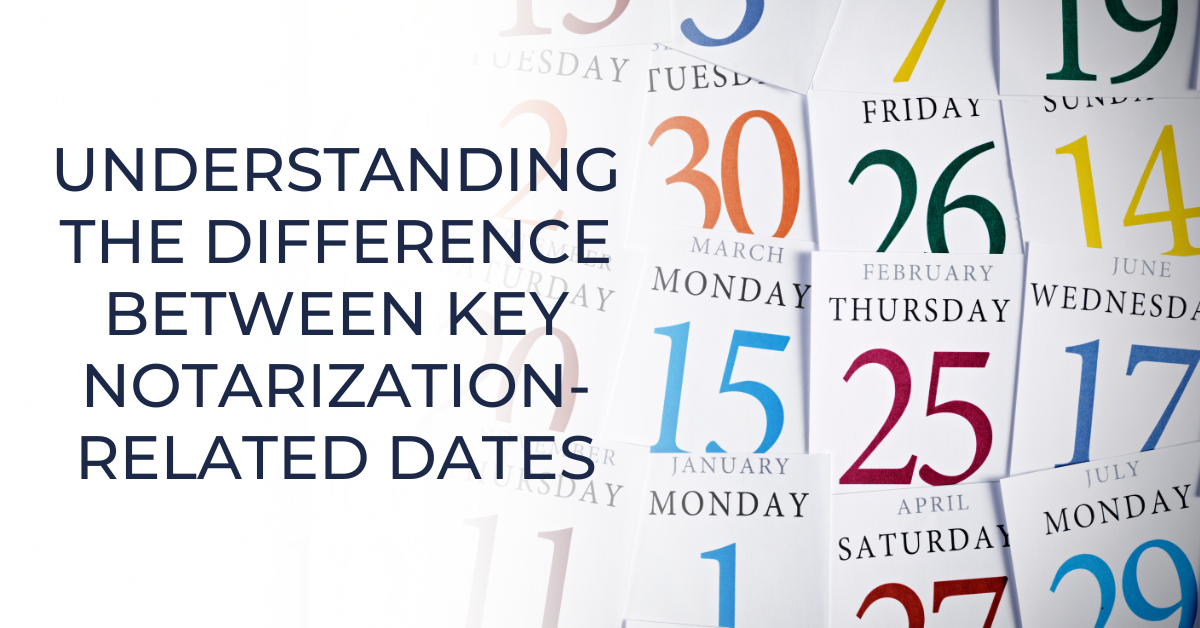Notary Public Underwriters Blog
Understanding the Difference Between Key Notarization-Related Dates
- Details
- Published: January 13, 2025

The document’s date of “execution” (signing). This is the date that the document signer whose signature requires notarization actually signed the document. One notarial act—the acknowledgment—may be performed when the document has been signed by the named principal before or during the notarial act. Other notarial acts—signature witnessings, and verifications on oath or affirmation—may only be performed if the document is signed by the named principal during the notarial act, in the notary’s presence.
A notary cannot complete a notarial certificate for a signature notarization if the principal’s signature date has been prefilled with a date in the future. The notary would need to strike-through the existing notarial certificate and write-in or attach a new, accurate certificate.
The document’s effective date. Some documents specify the date that the document takes effect. That date can be any date specified and agreed upon by the parties affected by (relying on) the document. It might be the date that the document was signed by the (sole) signer of the document, or the date that a particular signer signed the document, the date that the last of multiple required signatures was made on the document, or a date based on other criteria. Some documents do not have a specified effective date; they are presumed to be effective once all signatories have signed and no other effective date has been specified.
The date of notarization. This date will be noted in the document’s notarial certificate. It is the date that one or more document signers who are named in the officiating notary’s notarial certificate actually appeared before the notary to have their signatures notarized. Some documents with multiple document signers may have more than one notarial certificate, because the various document signers had their signatures notarized on different days and possibly by different notaries. If a notarial certificate is prefilled with an incorrect date of notarization, the officiating notary must correct the date.
Notary’s commission expiration date. Every notarial certificate contains information about the officiating notary, usually stamped on the certificate by the notary. The notary’s commission expiration date on a notarial certificate is credible evidence that the notary officiated under an active commission… unless the notary committed the error of notarizing after their commission term has expired. A notary’s commission expiration date is often incorporated into their official stamp or seal. In some states, the commission expiration date is written or stamped on the notarial certificate separately from the notary’s official stamp or seal.
Related Article(s)
How to Complete a Notarial Certificate
Can I Notarize a Document That Is Already Signed?
What to Do When the Notary Certificate Is Missing?
What Should I Do When There's No Room for My Notary Stamp?
Does a Notary Need to See the Entire Document When Notarizing?
Can a Notary Perform a Single Verbal Ceremony for Multiple Notarizations?
Notary FAQs: Essential Answers for Everyday Scenarios
Can a Notary Notarize a Family Member's Signature?
When Can a Notary Use Personal Knowledge to Identify a Signer?
Can a Notary Change a Document’s Date?
Can I Notarize a Document in a Language I Don’t Understand?
